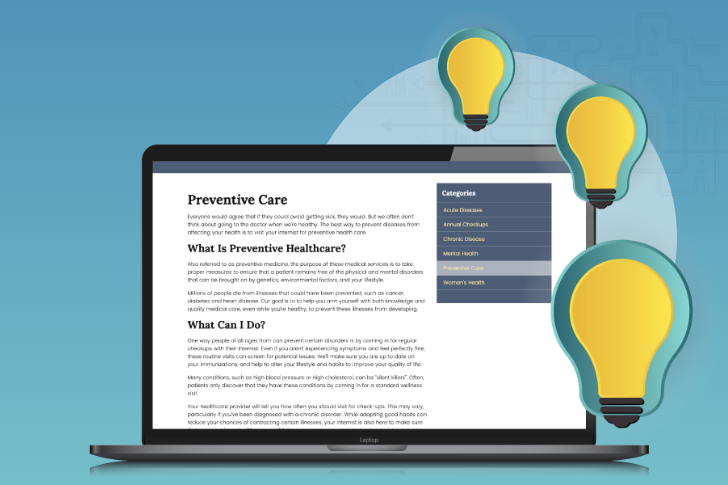By: Melody Gandy-Bohr
Your practice’s website is an important factor in your marketing strategy. Many of your patients will form their first impression of your practice based on your website. What impression will potential patients glean from a stale, outdated website versus a visually appealing website designed with users in mind? Good content and a sound SEO strategy are essential, but don’t forget about the website design. Here are a few design elements you need to know before the new year.
A Navigation Menu That Makes Sense
One of the top design elements that annoys users and causes them to leave a website is poor navigation. 37% of users reported that they have left a website because of a lack of clear and concise navigation. Create an engaging navigation menu that encourages site visitors to continue browsing your practice’s website. Descriptive page names like “Meet Dr. Klein” and “Medical Procedures” will win favor with Google.
Ditch Flash Player for HTML5
Flash was once necessary to run audio and video elements on your website. Now Flash is becoming obsolete, as well as susceptible to malware. Flash also does not work on mobile devices, where an increasing amount of traffic to your website comes from.
As a result, most browsers now disable Flash by default, which means if your website has Flash elements, they won’t work for many of your visitors. Responsive websites, almost as a rule, use HTML5 instead of Flash. This allows them to be flexible to smaller screen sizes, as well as providing the design embellishments that Flash once provided. This leads us to our next design principle:
Enhance Usability With a Responsive Design
It’s not enough to just have a mobile website anymore. To keep up with the competition, your practice’s website needs to be mobile-responsive. Much of your site traffic comes from mobile users who expect your website to adapt to the size of their screens and provide easy navigation. Not only will a responsive design lower your bounce rates, it is Google’s recommended design pattern for your website.
Be Wary of Endless Scrolling Parallax Designs
A popular design element is parallax design, a feature which allows users to scroll through seemingly endless content on a single page. While this element might seem like a good idea for mobile users browsing your site with one hand, it can hurt your practice with Google. Search engines are used to crawling traditional website structures with navigation menus. Essentially, parallax designs spread out all of your keywords across a single URL, which is bad for SEO.
From the structure of your navigation menu to the amount of multimedia elements you use, it’s important to understand how web design plays an integral part in your online marketing strategy. A simple tweak or update can impact your SEO and alter your website’s performance. Reach out to Officite today, and ensure your practice’s website makes the right impression!



